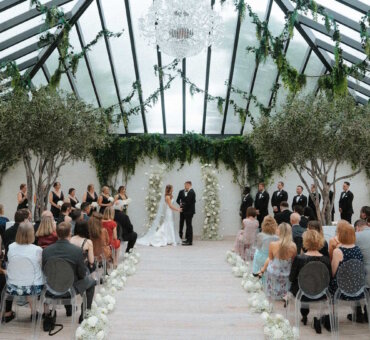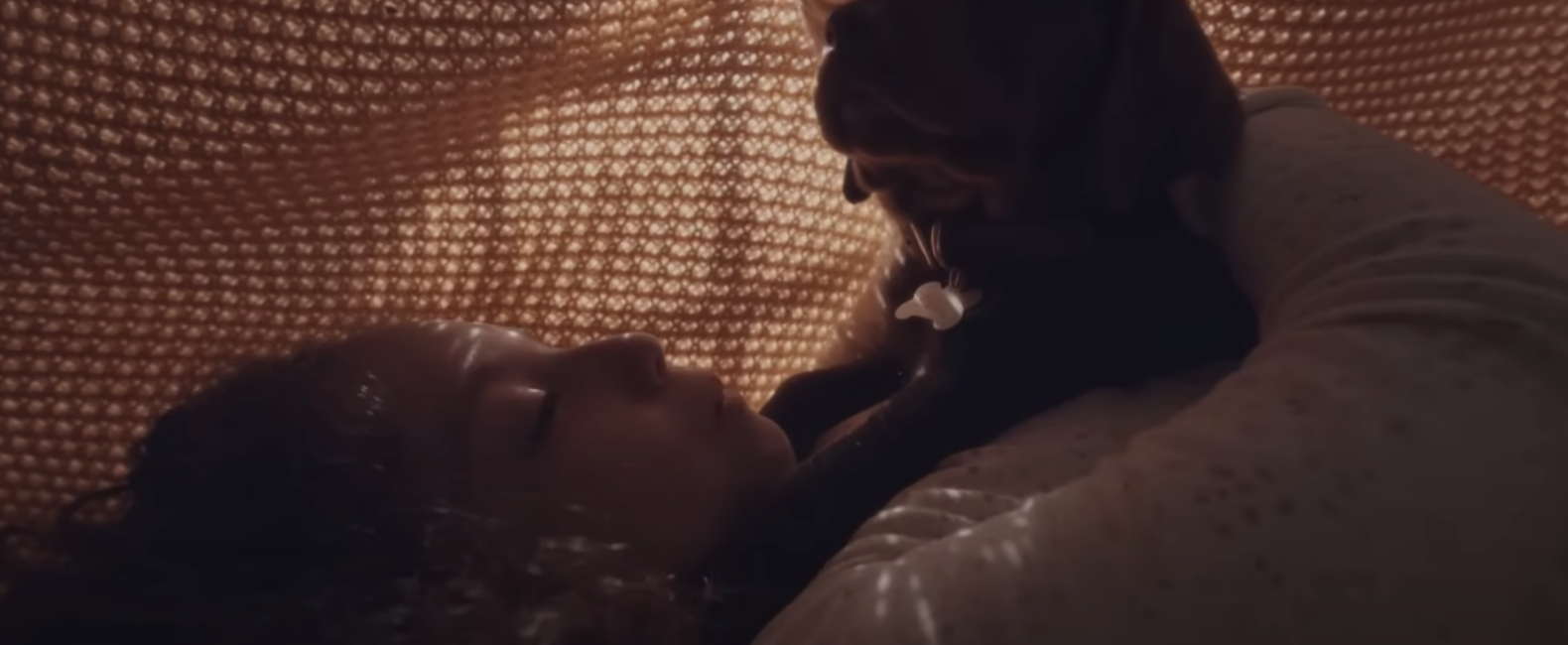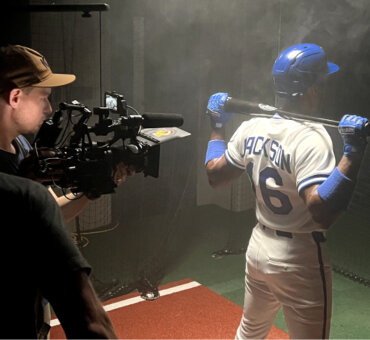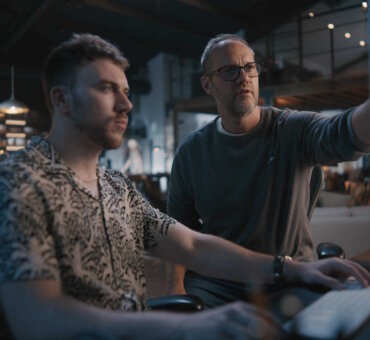In a crowded ad field during this year’s Big Game, “Forever” by The Farmer’s Dog, beautifully captured the dog lover’s lament in a heartwarming message: Nothing matters more than more years together.
If you made it through the 60-second spot without falling to pieces, we salute you. It’s a stunning example of powerful storytelling.
Interestingly, filmmaker Goh Iromoto’s experience directing the spot is almost as moving as the ad itself.
Because his portfolio lacked canine-related creative, Iromoto felt like the “underdog” of the pitch (no pun intended). In lieu of portfolio work, he sent the client a gallery of images of his black lab Peekay, along with a montage of their adventures together.
Ultimately, sharing his memories and experiences with his own beloved pet not only won him the bid—it helped shape a story that resonated with the nation.
And, you know you have something special when your pitch brings the client to tears. Twice.
We talked to the acclaimed director about his concepting process, scoring the emotional spot, and how directing the cathartic commercial enabled a proper goodbye. (Note: we recommend grabbing the tissues now.)
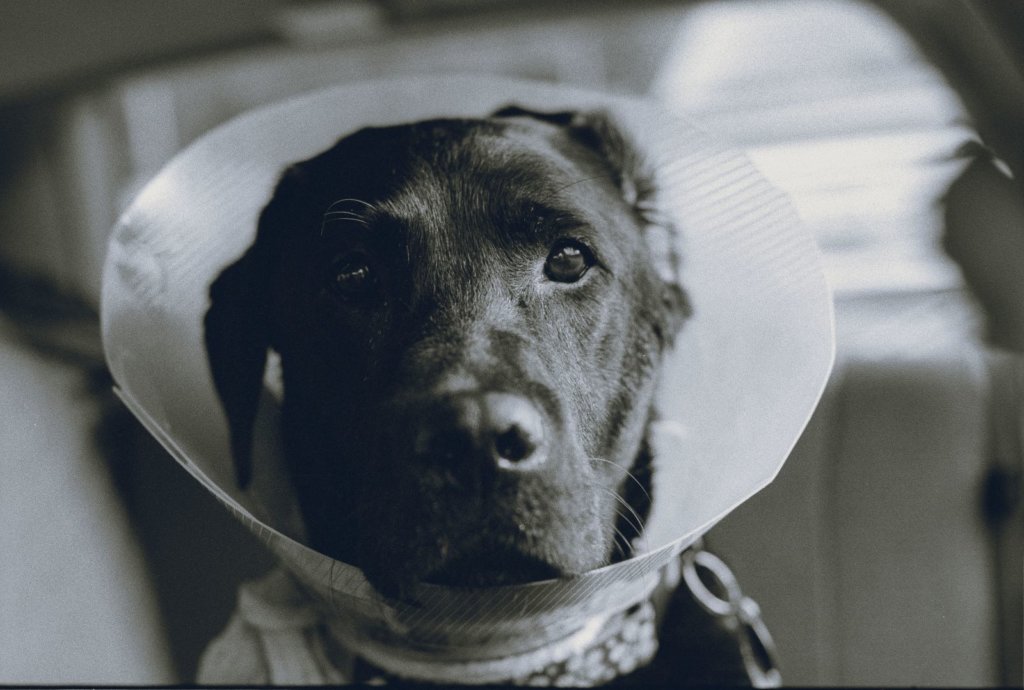
Musicbed: Tell us about the process of getting connected to The Farmer’s Dog.
Goh Iromoto: This job came through the video production service Sanctuary Content —what we call a direct-to-client.
It didn’t have a standard ad agency, which was rare for us working in advertising. It came straight from the client who had their own creative team, which was led by Sophie Foreman and Teressa Iezzi, as well as Executive Producer Sherri Levy.
They did a triple bid as they normally do at that point—me and two other very highly accomplished directors. No pun intended, I felt like I was the underdog of the bunch. I think I was the youngest and maybe less experienced, portfolio-wise. It was a standard pitch process where they had a brief call, and you’ll hop on the brief and have a conversation about the script and get a sense of the parameters.
What was so enticing about this was that it had an open-endedness to the script. The script they gave was basically the life of the dog, but the brief confirmed that they were really open to it being quite an elevated change, shifted from the director’s perspective. Sometimes with ad work, it’s gone through so much focus group testing already that by the time it gets to the brief, it loses that ability to have flexibility. This is one of the cases where the team had created this beautiful seed and allowed the collaboration of a director to actually elevate it.
From there, we did our pitches. What made this pitch process so unique was—it’s never happened to me before—the clients actually started to cry on the pitch call. I think it actually happened twice while I was telling them my story and idea. We got the sense that that was a good sign.
What made you want to direct this spot?
I read the script, and I was just completely flooded with emotion. I had a black lab myself around the same time in those formative years. I got her when I was in high school and then I had to go to university and say goodbye to her for a few years. I went through those very formative stages of life alongside my dog—I called her my little sister.
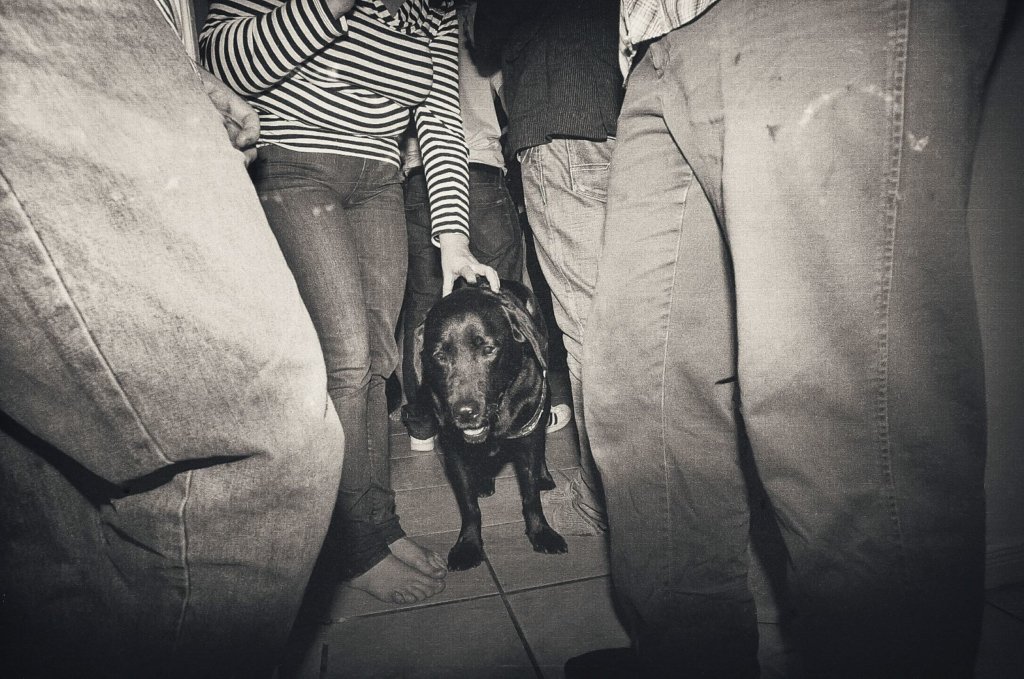
I grew up without siblings, and my dog became my family member, somebody that always made me feel like I was never alone. I had a very strong bond with my dog. I took her to parties, I took her to friends’ houses. I just took her everywhere, camping trips, everything.
[Peekay] got cancer when she was about six or maybe earlier actually. And in any case, at a young age, I had to go through this process of maybe losing a dog, and a sense of mortality came quite early for me in the life of a dog. Luckily, she pulled through and lived until she was 13 and a half years old. The whole concept of having more years together with your dog and animal was just so true to me.
What was your concepting process?
[The concept] really came and stemmed from a place of loving our dogs so much. We take photos of them and videos of them, and you just see countless highlights and memories of them.
I watched a bunch of references. I pulled some dog work in commercials from what I remember. I started to think about the movie Marley and Me, which surprisingly caught me off guard and made me quite emotional as well. And this whole idea of the flashback scene in the montage was something that I was able to add to the story in the original script.
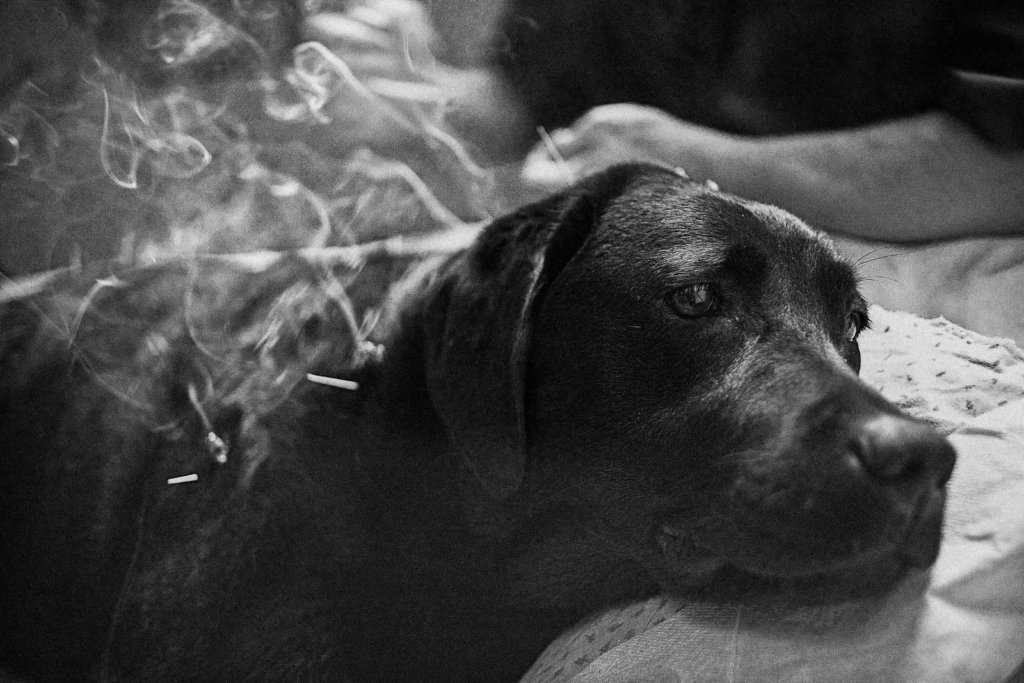
I remembered a commercial for the Humane Society up in Canada of a dog that was in a cage, and it kept doing flashbacks to it, running in a field with its owner. That commercial always made me cry—the idea of getting into the mind of the dog.
It resonated with me, and it clicked: we always see the life of dogs from our perspectives. What if it’s not always about us? And what if we can just see what love feels like from the other perspective? From a dog’s perspective of life, laughter, joy, sadness, everything?
How did you approach scoring the spot? Did you start with the song?
We didn’t start with the song, but the ask from the beginning was to use a soul track. Soul with a ’60s and ’70s sound was a little bit of a mandate coming from the top.
Without the right song, I wasn’t sure if it was going to hit the right note. There are a lot of songs of that era that are about a human love partnership. In my treatment process, I was actually leaning toward something with a sentimental, folksy kind of tone, which I thought would be really a bit stronger.
Music was a constant discussion, and we were throwing around quite a few tracks. Ultimately, the Farmer’s Dog team narrowed it down to “Forever”. [The song] actually wasn’t in our top running, but during editing, you just got to try out a bunch of stuff. Once we saw the edit come together, we all knew it was the right song.
I didn’t want the song to just be a soundtrack—I wanted to integrate it as part of the dialogue. Even in casting, we actually had the talent sing and hum. There would be one point where the music crosses over into the world, and it wasn’t just a background soundtrack to push emotions.
When it switches over to [Maasai Godwin] singing on camera, it’s a really powerful moment in combination with the montage. This song has been playing throughout the years: the scene of her napping on the couch with headphones, then as an adult napping on the floor of a living room with her headphones. Then we hear her at the end. The idea is that this song has been with them their whole lives as well.
What did you love or enjoy most about this project?
There were so many elements of this project that were challenging, new, and fun for me. I had never done a project that was multi-generational with both dogs and a human. So having to cast for a young girl, a teenage girl, and an adult girl, having to cast for puppies… We actually had four generations of dogs. We had a puppy, a one-year-old, a six-year-old, and a 13-year-old dog. That whole process was challenging, but my goodness, it was so much fun.
Part of the directing part that I love, aside from the writing, is the focus and attention I’m giving to performance, and getting to work with these actors was just unbelievable. Being able to manipulate and craft, and work together on different sorts of beats and expressions, was just such a gem because it was all part of the story after all. So that was quite cool, I have to say. And quite an amazing experience for me.
I do think though if I had to pin it down to one thing, it really was getting to relive the memories of my dog. I haven’t mentioned this to anyone yet, but my dog actually passed away on February 27—[almost] exactly 10 years ago to the date. And she kind of passed away near the beginning of my filming career when things were starting to skyrocket. I was actually away on travel jobs, and I happened to be home for one week in between two jobs, and that’s when she passed away. My mother will say that it was almost like she was waiting for me to come home to say goodbye. And because I hopped on a job right away, I don’t think I was able to fully grieve and process.
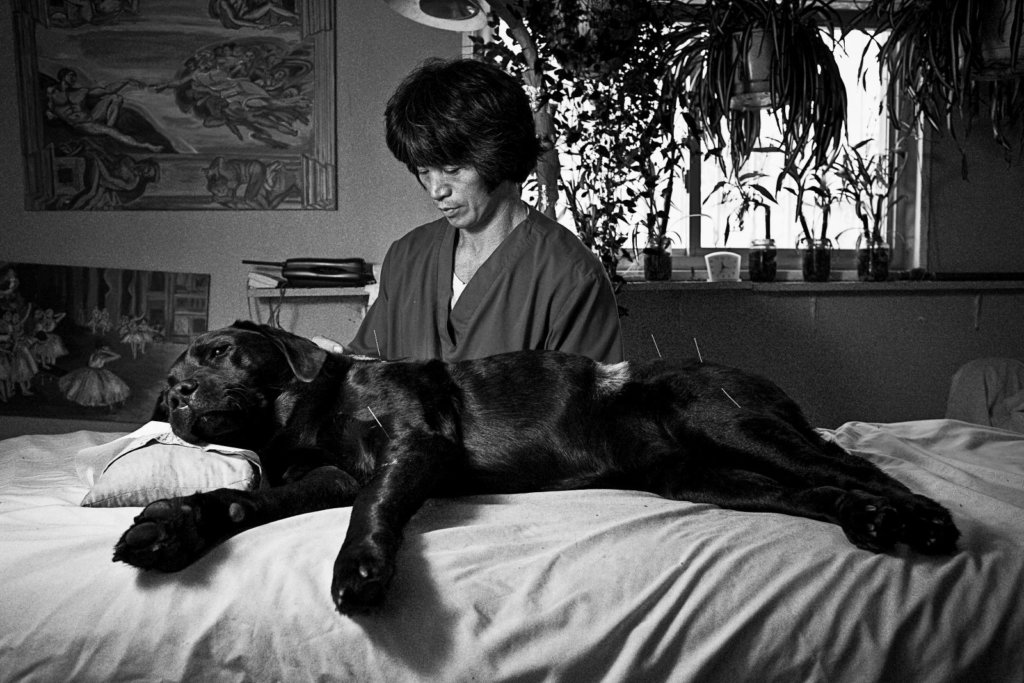
This job was my way of—finally after 10 years—actually properly grieving and processing. I haven’t had a dog since. And the memories of everything coming back was just so deep. Even working with the dogs, was like seeing my dog’s life from puppy to adulthood all over again—when she got wet in the ocean, and I would smell her fur, or even just the actual actor dogs licking me. Because my dog was a lab too, it felt like it was a proper goodbye. That’s what I loved most about this project.
Congratulations on winning the unanimous number-one spot for Big Game ads this year. Why do you think this spot connected with people so much?
It was a bit of a whirlwind after the spot aired, especially once it received that number-one spot. People from high school and people I haven’t talked to in years started reaching out. I was having a conversation with our DP Alexis Zabé, who also had shot The Florida Project and has been shooting commercials for Terrence Malik—an absolutely wonderful gem of a human and creative collaborator.
He wrote this line that was so meaningful:
You did what no one has done in the last few years and united the country for 60 seconds, and had us all cry together.
I do think that there was something about the purity of the moments that we were able to capture, that we crafted and spent quite a lot of time rewriting the script over and over again to come up with the perfect beats of the story. The story was there, the elements were there.
I think it just gave a chance for people to connect about something a bit more primal and pure, which is just a love and a relationship for a creature that has become so symbolic of unconditional love in our society, no matter what your political spectrum is. There’s a yearning for unconditional love. And I’d like to think that something about the storytelling really helped in that.
What do you think of Big Game ads mostly steering away from stories?
That’s a tough question. I should preface this answer by saying this ad was actually never meant to be a national ad right from the get-go—it was going to play 30 seconds locally. That happened as a result of having seen the cut and the CEO and the heads of the company loved it, wanted to share it, and knew that it was going to be something worthy of spending and making that investment for. So it all just snowballed and happened very quickly.
So, having said that, we didn’t go into this thinking: what’s going to make for a Super Bowl ad that’s going to resonate?
Now, I do think that’s sort of been helping this ad shine through is that it was one of the few deeply emotional ads. For the most part, the advertising this year leaned on comedy and celebrity cameos.
What’s interesting about celebrity ads is they give you a baseline of attention. But I did notice, from an objective marketing standpoint, if the ad didn’t resonate in the end, it wasn’t effective in selling the product or elevating the brand.
I’m seeing this more with Christmas ads, where they’re leaning towards story. If you can make an audience feel something, that feeling becomes associated with the brand. If that feeling becomes associated with the brand, it’s going to elevate the brand, and it’s going to really impact the business.
It’ll be curious to see what happens next year. If advertisers continue the trend or if they revert back and we see a shift in the balance of emotional storytelling.
What draws you to cinematic storytelling?
From a young age, I’ve admired storytelling that made me feel something purely visually. I used to be a director and cinematographer, because visuals really had a powerful emotional effect on me.
One of my favorite filmmakers, Terrence Malick, is able to tell an untraditional story arc with a strong resonance of visuals fueling the emotion. When I first saw [The Tree of Life], it hit me so powerfully, and it was a reinforcement of how important the visuals are to feed the emotion. I’ve admittedly made this pathway of prioritizing the visuals so much that it doesn’t necessarily feed the story. It’s a constant balance, calibration, and process for me to figure out what the balance is.
A good anecdote is often with my editor or my DPs. I’ll have to make hard decisions of whether I choose a shot that looks good but doesn’t tell the story quite as well, or a shot that doesn’t look great but tells the story better. Previously, I always leaned toward the stuff that looked better. Nowadays, it depends on my collaborators. I’ve edited two pieces with Sophia Lou—this one and another project called The Name—is such a great collaborator because she pushes me on the storytelling side. What you see is a total balance and collaboration of both of our minds when it comes to the editorial.
That gives you a bit of background and context as to why I feel cinematic storytelling is so important as opposed to story beats that don’t pay attention to the visuals. There’s something about the visuals that feed into an emotion that’s inexplainable and inarticulate. Because of that, I’ve found this abstract power of visuals that I always want to be part of my stories.
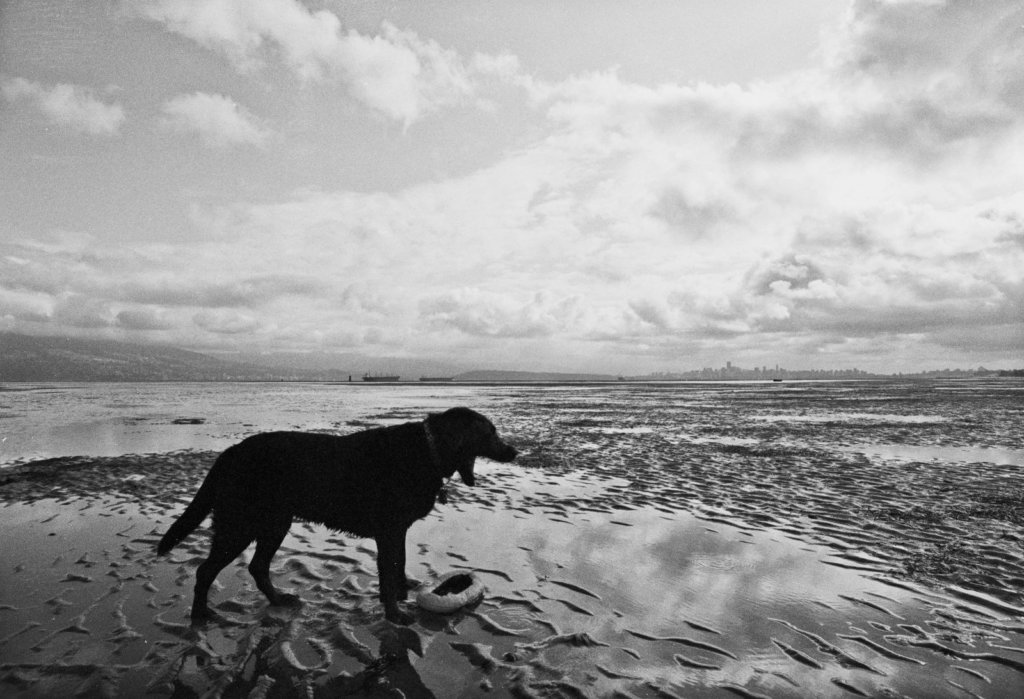
Lastly, what’s next for you?
Well, aside from receiving some incredible feedback and continuing to work on commercial work that resonates with me, I’m looking into shorts, features, and docs that also resonate with me and continuing to venture into the writing and performance aspects of filmmaking. That’s been a big change, and I want to continue to do so.
I’m also revising my storytelling. I did an interview for Filmsupply a few years ago during COVID, when I was sort of at the finishing stages of this process of filmmaking, which I still utilize now. I called it the sandbox way of filmmaking, where I would create scenarios and structures in a film and I still very much do that, but I do now craft my stories a little bit more intentionally.
Back then I would’ve said something in my interview like, I didn’t storyboard, and I just kind of went my way in visually and feeling things. But I’m now venturing into a hybrid way of filmmaking, sort of documentary and storytelling, where I would take traditional filmmaking techniques—what you would learn in film school—and mix that in with what I’ve been doing so far, more of a documentary or instinctually based approach. So, continuing to do that, is where I’m at.































































